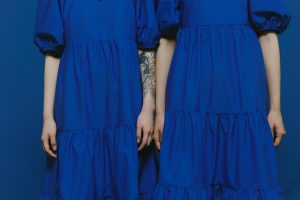Exploring the Evolution of Bridal Wear and Wedding Fashion
When we think of weddings, the first thing that often comes to mind is the bride’s stunning white dress. For centuries, bridal wear has played a significant role in weddings, and it has undergone a remarkable evolution throughout history. From traditional gowns to modern-day designs, wedding fashion has continuously evolved to reflect the changing times, cultural influences, and societal norms. In this article, we will explore the evolution of bridal wear and wedding fashion, from ancient civilizations to the present day.
The Origins of Bridal Wear
The concept of a bride wearing a special garment for her wedding can be traced back to ancient times. In ancient civilizations like Greece and Rome, brides would often wear long tunics tied at the waist to symbolize their purity and virginity. However, it was not until the Middle Ages that bridal wear became more elaborate and represented wealth and social status.
During the medieval period, brides would adorn themselves in opulent gowns made of luxurious fabrics like velvet and silk. These dresses were often embellished with jewels, and the length and style of the gown denoted the bride’s social standing. For instance, only the royal family was allowed to wear gowns with trains.
The Victorian Era
The Victorian era was a pivotal period in the history of bridal wear and wedding fashion. It was during this time that Queen Victoria popularized the white wedding dress. Before her wedding to Prince Albert in 1840, brides would typically wear dresses in different colors, including red and blue. However, Queen Victoria’s choice to wear a white dress sparked a trend that is still prevalent today.
In the early 20th century, bridal fashion took a glamorous turn with the rise of Hollywood films. Brides began to emulate the iconic style of movie stars like Audrey Hepburn and Grace Kelly, who sported elegant and sophisticated gowns. The ’20s and ’30s saw the rise of flapper-style dresses, while the ’40s saw the introduction of sweetheart necklines and full skirts.
The Swinging ’60s and ’70s
The 1960s and ’70s were an exciting time in the world of bridal fashion. The youth-dominated culture of the ’60s brought about a shift in wedding attire, with shorter hemlines, bold patterns, and unconventional colors. The iconic wedding of John Lennon and Yoko Ono perfectly encapsulates this era, where the bride wore a mini-skirt and a simple white suit.
The ’70s saw a similar trend towards non-traditional wedding attire, with brides opting for flowy, bohemian dresses or pantsuits. This decade represents a significant shift in bridal fashion, where brides began to prioritize personal style and comfort over societal norms.
Modern-Day Bridal Wear
The turn of the century brought about a more relaxed and diverse approach to bridal wear. The minimalist trend of the ’90s carried over into the 2000s, with brides opting for sleek, simple gowns without excessive embellishments. This era also saw an increase in the popularity of non-white wedding dresses, with pastel shades and even black becoming acceptable choices.
In recent years, bridal wear has undergone a significant transformation, with more emphasis on individuality and inclusivity. Today, brides can choose from a wide range of styles, silhouettes, and colors, catering to all body types and cultural backgrounds. From romantic boho-chic dresses to edgy jumpsuits and everything in between, modern-day bridal fashion truly has something for everyone.
The Future of Bridal Wear
As we look towards the future, we can expect bridal wear to become even more diverse and inclusive. With the rise of sustainable fashion, we may see more brides opting for eco-friendly and ethically-made wedding dresses. There is also a growing trend towards comfort, as brides are prioritizing functionality and practicality over traditional aesthetics.
In conclusion, the evolution of bridal wear and wedding fashion has been a fascinating journey, reflecting the ever-changing times and cultures. From modest tunics to extravagant ballgowns, from monochrome dresses to bold patterns and colors, bridal fashion continues to evolve and pave the way for new traditions and trends.










